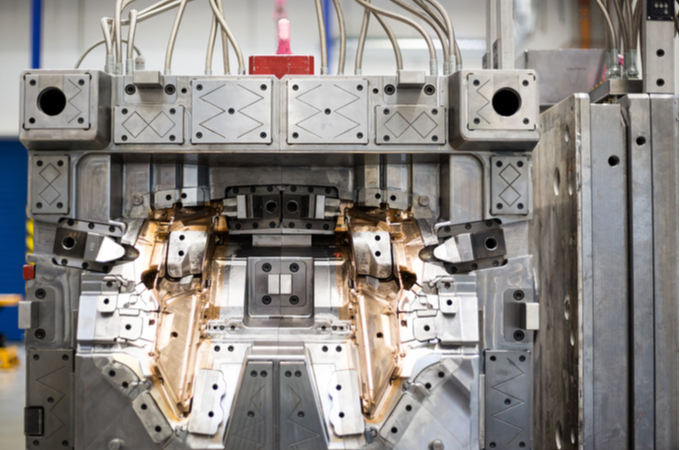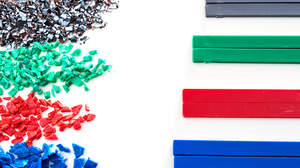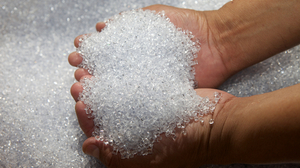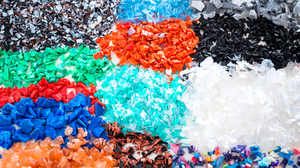Do You Know About These Advantages And Benefits Of Custom Injection Molding?
As a manufacturing process, custom injection molding offers a number of advantages over other methods of production — including other types of molding. There’s a reason the global plastics market is expected to soar to $654.38 billion in value in the next few years. A major part of that is the extent to which plastic molding can serve a broad range of applications and uses in a huge cross-section of industries.
Of course, no single manufacturing process is perfect for all applications, but here are some reasons that custom injection molding should be on your radar:
- Broad design flexibility. Custom injection molding affords the ability to design highly complex pieces according to the needs of the customer. While there are a number of best practices for
 injection molding that help to ensure efficient production and suitable part quality and reliability, the possibilities within these design best practices are quite broad. Even when adhering toconventions such as rounded corners, tapered walls and gradual changes in wall thickness, injection molding designers and toolmakers are able to meet even the most complicated requirements.
injection molding that help to ensure efficient production and suitable part quality and reliability, the possibilities within these design best practices are quite broad. Even when adhering toconventions such as rounded corners, tapered walls and gradual changes in wall thickness, injection molding designers and toolmakers are able to meet even the most complicated requirements. - Easily customizable. Many — in fact, most — injection molding resins are highly suitable for having colorants mixed in with them in order to produce surface coloring different from the natural (and often unattractive) color of the plastic. Most shops can recreate any Pantone color for an injection molding project, making the process especially suitable for applications where aesthetics are important — e.g., consumer products.
- Control over quantities. A good custom injection molding supplier will allow you to work in any quantity that’s suitable for your requirements — even low, medium or prototype runs. Injection molding is a cost-effective process, but it quickly loses value if you’re forced into minimum orders or machine times — not to mention the excess inventory that you’ll be forced to carry. The reality is that options, such as 3D printed molds, exist to make short-run injection molding a viable and easily accessible service.
- Widely variable tooling costs. Often, the cost of the mold or tool is cited as a barrier to entry for many customers who may wish to have a part injection molded, but don’t want to (or aren’t able to) meet the high cost of production for high-quality tool steel molds. There are a number of other options available for tooling — including, as mentioned above, 3D printed molds, which can offer the quality needed for prototyping or low-quantity production runs. In addition, other, “softer” metals such as aluminum molds can be very effective for short-to-medium productions runs — reliably producing quality parts in quantities up to the thousands (or more). Be sure to work with a supplier that’s willing to discuss your needs, and help you meet them.
- Tight tolerances. Injection molding is a highly precise process, with little variance in part dimensions and tolerances, and relatively easy ways to account for the variance that does exist. A major factor in injection molding is shrinkage of the heated plastic resin as it cools, which can, in some cases, lead to defective or rejected parts. Accounting for shrink doesn’t have to be a guessing game, however: Proper injection, packing and cooling times, along with proactive part design and knowledge of the physical properties of your material, can help to ensure that your parts meet the required specs.
- Efficient material use. Unlike “subtractive” processes such as CNC machining, injectionmolding is a process that results in little waste. Often, only as
 much material as is required for acycle or production run is used (since it’s injected directly into the molds and cavities), and any waste that does occur can easily be recycled and re-incorporated into your raw material stock.
much material as is required for acycle or production run is used (since it’s injected directly into the molds and cavities), and any waste that does occur can easily be recycled and re-incorporated into your raw material stock. - Easy reclamation and recycling. Continuing on the above theme, custom injection molding offers advantages and benefits over other processes because any material that does end up as waste — for instance, defective or rejected parts — can easily be reclaimed and recycled, and thus re-used for a future production run. Reclaiming “waste” injection molding resin is often as simple as heating the defective part or excess material back into a molten liquid form, which can then be used again.
- Combinations of pieces and materials. Advanced processes such as co-molding and overmolding make injection molding a simple way to add even more customization to your part or product. In a nutshell, utilizing a process such as overmolding means that your injection molded part doesn’t need to be limited to materials suitable for injection molding. For instance, resin can be overmolded around a metal core or piece for added strength, a more interesting or attractive appearance, or more complex functionality.
- Fast turnaround times. Much like concerns about the cost of tool steel molds, you may hear that injection molding is inefficient because the mold can take weeks or months to build. For shorter runs or other scenarios where tooling from a different material is suitable, however, that mold creation time can be much shorter — just a matter of days for 3D printed tools, in fact. Couple that with the fact that injection molding cycle times are quick compared to other processes, and it all adds up to turnaround times faster than just about any other similar process available.
- Automation. While knowledgeable, experienced personnel will always be a critical part of a successful injection molding process, the nature of injection molding means that it’s highly suitable for automated processes such as part ejection and removal, or changing of tooling. Increased automation makes for a more efficient process.
- Little to no finishing needed. For many applications, the natural finish of a plastic resin is
 suitable for the finished product. In fact, it’s often the reason why a customer might choose injection molding as a process (and its suitable resins as a material). If texturing or another typeofsurface finish is desired, it can often be included as part of the design of the mold, rather than applied via a secondary process. The ease with which coloring and other design elements canbe added, in-process, add to the time savings of a reduced (or non-existent) finishing stage.
suitable for the finished product. In fact, it’s often the reason why a customer might choose injection molding as a process (and its suitable resins as a material). If texturing or another typeofsurface finish is desired, it can often be included as part of the design of the mold, rather than applied via a secondary process. The ease with which coloring and other design elements canbe added, in-process, add to the time savings of a reduced (or non-existent) finishing stage.
Among the many types of plastic manufacturing and molding processes available, custom injection molding stands apart as one of the most cost-effective, versatile, efficient methods to date.


 injection molding that help to ensure efficient production and suitable part quality and reliability, the possibilities within these design best practices are quite broad. Even when adhering toconventions such as rounded corners, tapered walls and gradual changes in wall thickness, injection molding designers and toolmakers are able to meet even the most complicated requirements.
injection molding that help to ensure efficient production and suitable part quality and reliability, the possibilities within these design best practices are quite broad. Even when adhering toconventions such as rounded corners, tapered walls and gradual changes in wall thickness, injection molding designers and toolmakers are able to meet even the most complicated requirements. much material as is required for acycle or production run is used (since it’s injected directly into the molds and cavities), and any waste that does occur can easily be recycled and re-incorporated into your raw material stock.
much material as is required for acycle or production run is used (since it’s injected directly into the molds and cavities), and any waste that does occur can easily be recycled and re-incorporated into your raw material stock. suitable for the finished product. In fact, it’s often the reason why a customer might choose injection molding as a process (and its suitable resins as a material). If texturing or another typeofsurface finish is desired, it can often be included as part of the design of the mold, rather than applied via a secondary process. The ease with which coloring and other design elements canbe added, in-process, add to the time savings of a reduced (or non-existent) finishing stage.
suitable for the finished product. In fact, it’s often the reason why a customer might choose injection molding as a process (and its suitable resins as a material). If texturing or another typeofsurface finish is desired, it can often be included as part of the design of the mold, rather than applied via a secondary process. The ease with which coloring and other design elements canbe added, in-process, add to the time savings of a reduced (or non-existent) finishing stage.
